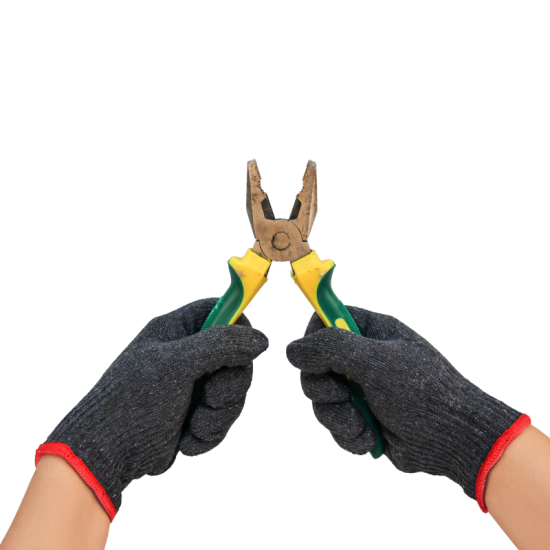The evolution of cotton work gloves has seen significant advancements over time to meet the changing needs of workers in various industries. Here is a general overview of the evolution of cotton work gloves:
- Early Development: Cotton gloves have been used for centuries, primarily for general hand protection and warmth. Initially, these gloves were simple, hand-knitted garments made from natural cotton fibers.
- Industrial Revolution: With the advent of the Industrial Revolution, the demand for cotton work gloves grew significantly. As industrial processes became more mechanized, workers needed gloves that offered better protection against rough surfaces, abrasions, and cuts. Manufacturers started producing sturdier and more durable cotton gloves to meet these requirements.
- Technological Advancements: With advancements in textile manufacturing technology, cotton work gloves underwent improvements in terms of fabric quality, stitching techniques, and sizing options. Seamless knitted gloves became more prevalent, enhancing comfort, dexterity, and fit.
- Coatings and Finishes: Over time, cotton work gloves started incorporating coatings and finishes to enhance their functionality. Latex, nitrile, or polyurethane coatings were added to improve grip, provide better resistance against liquids or chemicals, and increase overall durability. These coatings expanded the range of applications where cotton work gloves could be used effectively.
- Specialized Applications: As industries diversified, the need for cotton work gloves with specific properties arose. Manufacturers developed specialized cotton gloves to cater to various applications. For example, heat-resistant cotton gloves with added insulation were designed for tasks involving high temperatures, while cut-resistant cotton gloves were developed to provide increased protection against sharp objects.
- Ergonomics and Comfort: In recent years, there has been a focus on improving the ergonomics and comfort of cotton work gloves. Manufacturers have introduced features such as ergonomic designs, better breathability, moisture-wicking properties, and adjustable closures to enhance wearer comfort and reduce hand fatigue.
- Sustainable and Eco-Friendly Options: With the growing emphasis on sustainability, eco-friendly materials and manufacturing processes are being incorporated into cotton work gloves. Recycled cotton fibers, organic cotton, and environmentally friendly dyeing processes are used to reduce the environmental impact of glove production.
- Technological Integration: As technology continues to advance, there is ongoing exploration of incorporating smart features into cotton work gloves. This includes integrating sensors, connectivity, or touch-screen compatibility to meet the demands of modern workplaces.
The evolution of cotton work gloves has been driven by the need for improved protection, comfort, and functionality. Continuous innovation and the adoption of new materials and technologies have contributed to the development of more advanced and versatile cotton work gloves that cater to a wide range of industries and tasks.


